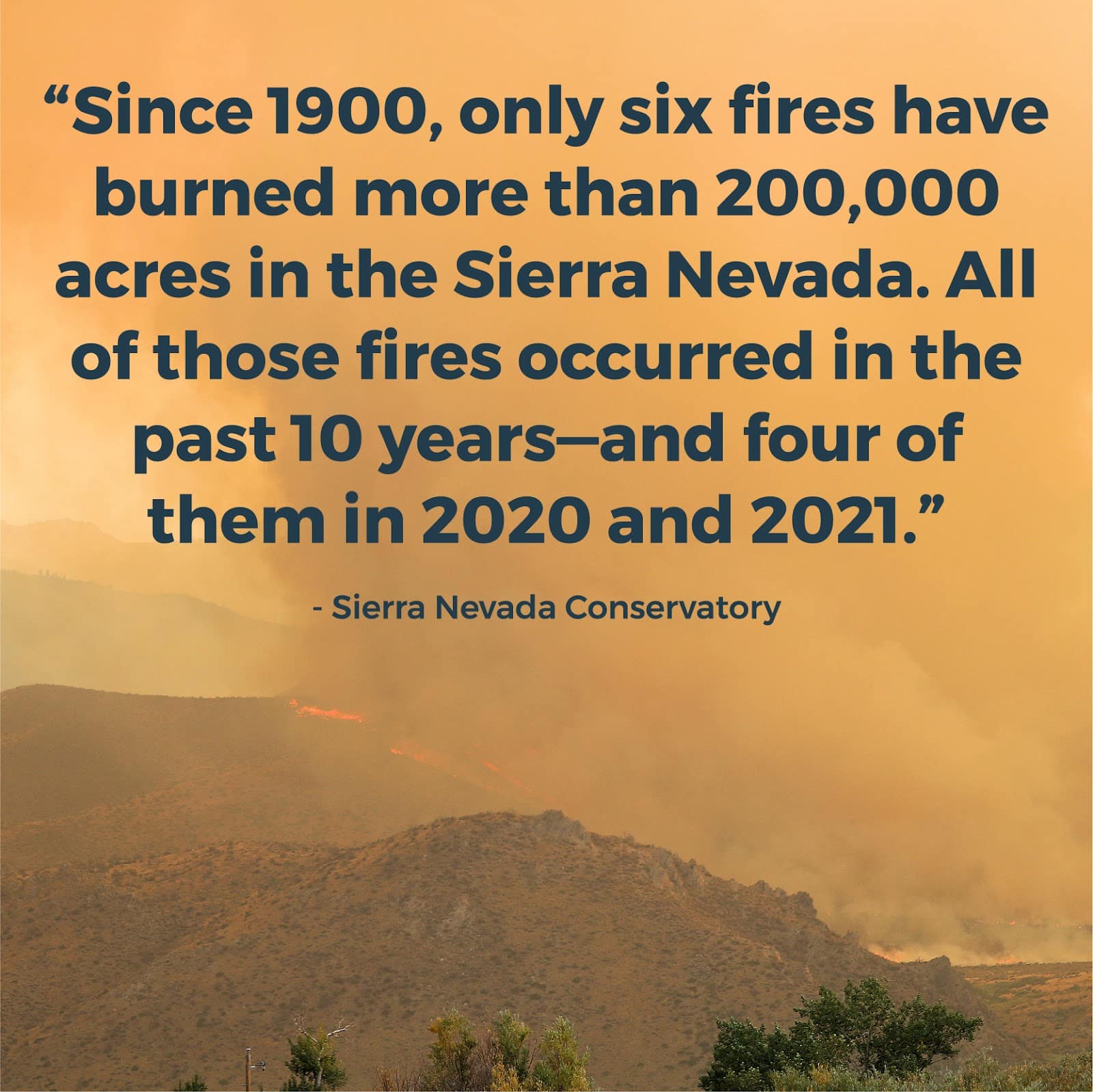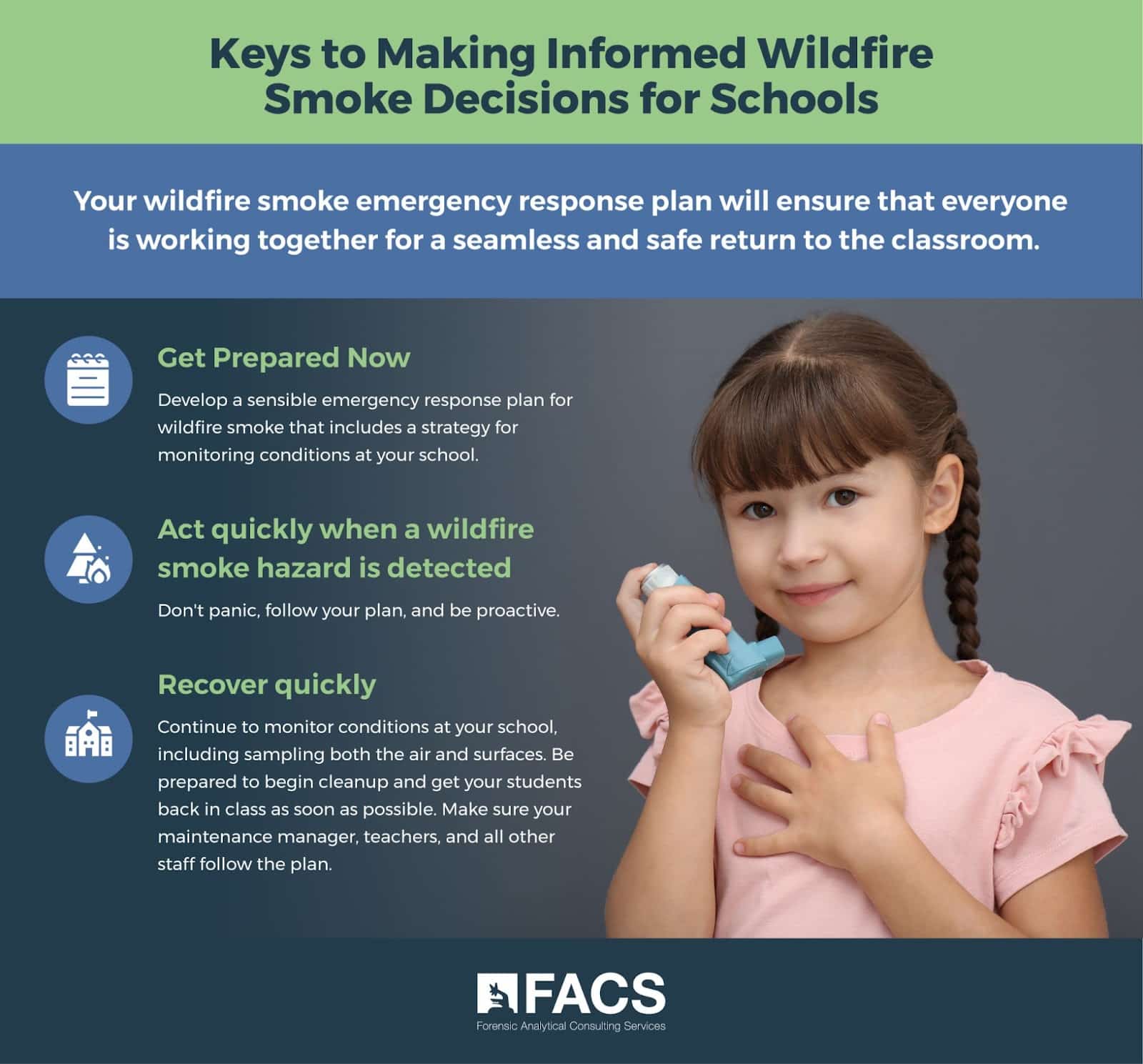Wildfires are occurring more frequently than ever before, and the smoke from those fires is threatening the health of not only those who live near the fire but can adversely impact schools and communities hundreds of miles away.
Air quality degradation due to wildfire smoke often puts school administrators in the uncomfortable position of balancing the need to protect their students with the job of educating them. Each day the school is closed forces teachers to revamp their lesson plans and can draw a fresh round of criticism from parents and the public.
Wildfire smoke isn’t just a California or western states issue; wind currents and natural terrain can carry wildfire smoke to your city and school regardless of where you live. According to the data, the odds of that happening are quickly increasing.

Consider this observation by the Sierra Nevada Conservancy:
More than 1.5 million acres burned in the Sierra Nevada in 2021, a new record. It broke the previous record set in 2020 … Since 1900, only six fires have burned more than 200,000 acres in the Sierra Nevada. All of those fires occurred in the past 10 years—and four of them in 2020 and 2021.
And this report from the World Resources Institute:
New data on forest fires confirms what we’ve long feared: Forest fires are becoming more widespread, burning nearly twice as much tree cover today as they did 20 years ago … In fact, 2021 was one of the worst years for forest fires since the turn of the century.
No matter what we attribute the sharp rise in wildfires to, the reality remains the same: Communities not in the burn area of a wildfire must still remain vigilant to the threat posed by wildfire smoke.
This article outlines a three-step system that can help school officials and school risk managers get prepared for, manage during, and recover from wildfire smoke events. We suggest leveraging a wildfire smoke emergency response plan that places the health of the students, staff, and visitors ahead of any other concern — while consistently communicating the science behind their decisions to all stakeholders.
Exposure to Wildfire Smoke Particulate Matter Is Especially Hazardous to Children
Children are more sensitive to the hazards associated with wildfire smoke than are adults. Young bodies are still developing, and exposure to excessive levels of wildfire smoke can lead to big problems later in life.
Particulate matter (PM) in wildfire smoke is a special concern. It is an airborne mixture of solid particles and liquid droplets. While some particulate matter is visible (think of ash from a campfire) fine particulate matter cannot be seen without using optical microscopy.
When particulate matter is small enough it can travel deeply into the respiratory tract and lungs. Scientists and medical researchers designate 2.5 micrometers (PM2.5) as the point where extreme hazards to human health can occur. To put size in perspective, a single human hair is about thirty times wider than a PM2.5 particulate.
How Can Schools Assess the Indoor Air Quality at Their Location?
School officials need a reliable method for determining the level of air quality at their location. The best decisions are based on science, rather than on public opinion or news reports. FACS environmental experts field questions like this frequently:
- If I can smell the smoke from a wildfire, does that mean classes should be canceled and students dismissed?
- How is the threat level from wildfire smoke determined?
- Which federal, state, and local regulations apply in my location?
Wind currents and natural landscape can put one school at extreme risk from fine particulate matter even though the air quality at a nearby school is considered acceptable. Data from air quality monitoring stations provides an overall assessment of PM levels in your area, but unless your school is situated next to the monitoring equipment your air quality index (AQI) may differ from what the monitoring station states.
Sensory observations tell you whether you can see or smell smoke, but don’t give you sufficient information to decide whether to allow classes for the day or permit students to go outside for physical education and recess. The only way to be sure is to measure the PM level onsite, but that requires accurately calibrated, properly operated, rather expensive instruments.
That is why we urge school administrators to develop an emergency response plan for managing wildfire smoke hazards. Don’t wait until parents are calling frantically, dire reports dominate the news, and your students are afraid to come to school. Know the process for making a sound, science-based decision, then communicate that plan to your parents, staff, and community. Take action now … so you will be prepared later.

Three Steps Schools Can Take to Make Informed Wildfire Smoke Decisions
FACS experts are often asked to step in when there’s a crisis already in play: the community is up in arms, teachers are complaining, and school administrators are out of ideas on what to do next. We communicate with stakeholders to reduce the fear level and work with the school to quickly get a science-based, common sense strategy in place. Calling FACS during a wildfire smoke emergency is the norm, but it’s not the method that will serve you best.
If you sat across from a FACS environmental health expert during lunch at a school safety conference (for instance) and asked “What are the most critical steps I can take to protect my students and staff from the hazards of wildfire smoke?” here is the advice you would receive:
1. Get prepared NOW. Don’t wait. Develop a sensible emergency response plan for wildfire smoke that includes a strategy for monitoring conditions at your school.
2. Act quickly when a wildfire smoke hazard is detected in your monitoring system. Don’t think about it, don’t worry about it, and don’t let the meteorologist or anchor on the evening news make your decisions for you. Follow the plan. If you have questions, call FACS for help. Be proactive. Lead the discussion. If you fail to rise to the occasion, you’ll find that fear and rumors will gladly take control.
3. Recover quickly. Continue to monitor conditions at your school. Sample both the air and the surfaces. Be prepared to begin cleanup and get your students back in class as soon as possible. Make sure your maintenance manager follows the plan. Make sure your teachers and staff follow the plan. Your wildfire smoke emergency response plan will ensure that everyone is working together to make sure there is a seamless and safe return to the classroom.
Wildfire Smoke and Schools: Your Community Will Thank You
You know how to do your job. That’s why you were hired for the position. Don’t allow an outlier like wildfire smoke throw you off balance. Use the decision-making skills you already possess to decide now that you are going to get prepared before the next crisis begins.
Know and follow best practices. If you live in a state that does have wildfire smoke regulations, incorporate them into your emergency response plan. If you live in a state that has no wildfire smoke regulations, create your own internal guidelines. Consult air quality monitoring districts to inform your monitoring activities and to help you protect your staff and students.
Just like you, FACS is a champion of public health. We can assist with everything from on-site investigations with real time air monitoring during and following wildfire events, to helping develop your emergency response plan for wildfire smoke. We often lead meetings at schools where we explain the situation to parents, teachers, and others with concerns. Our science-based approach serves to quell fears and restore confidence in the school’s ability to handle wildfire smoke issues in the safest and most effective manner.
Call FACS to find out how we can help your school make wildfire smoke decisions quickly, accurately, and with confidence. Here’s our number: (888) 711-9998.